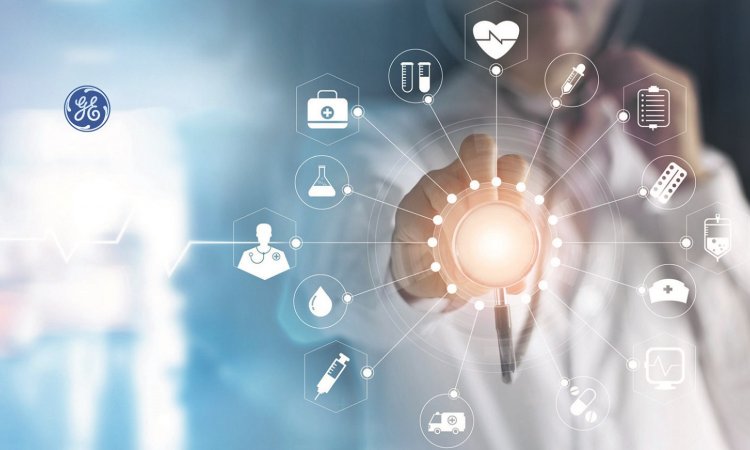GE's portable ultrasound systems check USA's Olympic athletes
As the opening of the Beijing 2008 Olympic Games nears, the US Olympic Committee (USOC) and the General Electric Company (a Worldwide Partner of the Olympic Games) are running two research programmes aimed at demonstrating that health monitoring and early intervention leads to injury prevention and enhanced health and sports performances for athletes.
These studies are continuations from research at the Torino 2006 Olympic Winter Games. The first is to focus on cardiac clinical research, involving the USA’s Olympic athletes and hopefuls in men’s rowing and the weightlifting teams. The second will monitor the musculoskeletal health of USA athletes competing in weightlifting, boxing, wrestling and in the Women’s National Soccer Team.
‘Every day an Olympic athlete spends in rehab is a day lost in training, making earlier injury diagnosis and real-time recovery monitoring crucial for elite performance,’ explained Dr Michael Reed, US Olympic Committee Medical Director in the Performance Services Division. ‘As a National Olympic Committee, it’s important to have the most innovative tools to help predict, diagnose, treat and monitor sports injuries earlier and ensure a quick return to play. It’s my belief that GE’s ultrasound technology will become a standard tool in healthcare for athletes.’
The Cardiac Research Programme
Led by Malissa Wood, of the Massachusetts General Hospital Heart Centre (MGH) in Boston, the research team is using GE’s Vivid i – an advanced, miniaturised cardiovascular ultrasound system – to examine athletes’ hearts pre- and post- rowing and weightlifting competitions, to learn more about the function and performance of highly-conditioned hearts.
For Dr Wood, the programme is ongoing; she partnered with the USOC and GE Healthcare to study the hearts of the USA’s short track speed skaters for the Olympic Winter Games in Torino. So far, study results have indicated specific changes in heart function that correlate to different levels of training. According to Dr Wood and Dr Michael Picard from MGH, those Torino results proved ‘…participation by world-class speed skaters in a vigorous training regimen results in cardiovascular anatomic and physiologic adaptations. These changes, including cardiac chamber dilatation, enhanced ventricular diastolic function and attenuated resting right ventricle systolic function, are likely adaptive and allow for more efficient energy use at rest and a robust response to demands of exercise. In other words, these athletes had an enlargement of the cavities of the heart and better function of the heart compared with others of the same age and gender.’
To confirm Torino results, the current research programme will study athletes from the traditionally recognised high-intensity sports, and compare differences in heart function and energy use with endurance athletes, as well as from the general population.
Focus: point-of-injury diagnosis
The second clinical study, led by Drs. Marnix T van Holsbeeck, Tony Bouffard and Scott A. Dulchavsky of Henry Ford Hospital in Detroit, Mich., centres on improving the overall musculoskeletal health of athletes on the field.
The research will focus on hip, shoulder, ankle and knee regions and, similar to efforts in Torino (US women’s hockey team) they will investigate whether taking healthy baseline scans of athletes helps to determine the extent of future sports injuries, quicker and more precisely. For the Beijing Olympics, the Henry Ford investigators want to assess whether changes in ligaments, cartilage and muscle seen before the Games may have an effect on the athletes performances during the Olympics.
According to Dr van Holsbeeck, ultrasound can highlight problems with structure and mobility of tissues that no other examination technique can show. The researchers are using GE’s LOGIQ i, a lightweight, portable ultrasound system that enables real-time diagnosis. Designed for a modern, all-digital healthcare environment, LOGIQ i allows shared information for consultation and electronic archiving. ‘Having a tool that can accurately and immediately determine the severity of an injury gives the sports physician the ability to determine if an athlete can continue to compete in time critical situations. It also can be used to guide training and rehabilitation after injuries,’ Dr Dulchavsky pointed out. ‘This study empowers athletes and doctors to take a proactive approach with their health, potentially preventing injuries before they even occur. Our ability to use this technology, and to stream the images across the World using the Internet, will be an extremely valuable tool in expanding healthcare capabilities not only during the Olympic Games, but to communities everywhere,’ he added.
Initial results from both clinical studies are expected around the opening of the Beijing Olympics. GE also expects to conduct similar athlete research programmes in other countries.
Further details: www.usolympicteam.com; www.gehealthcare.com
30.04.2008











